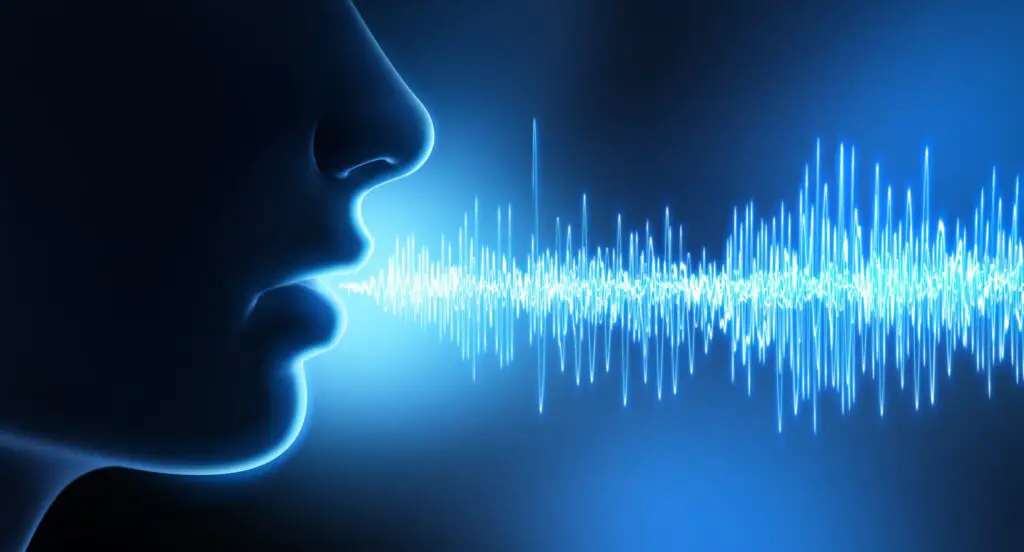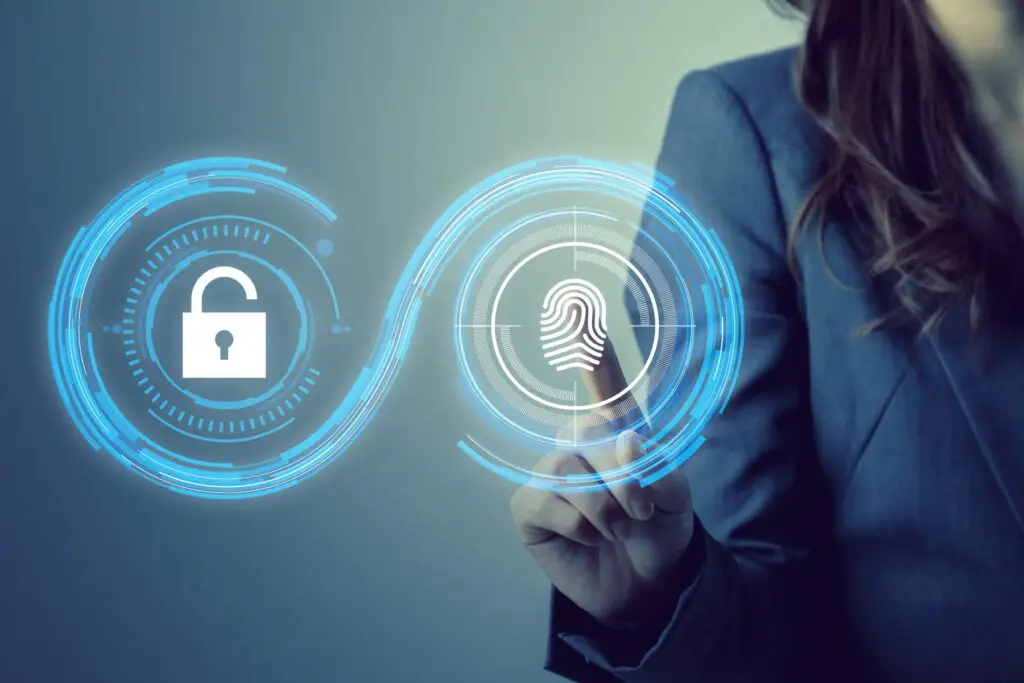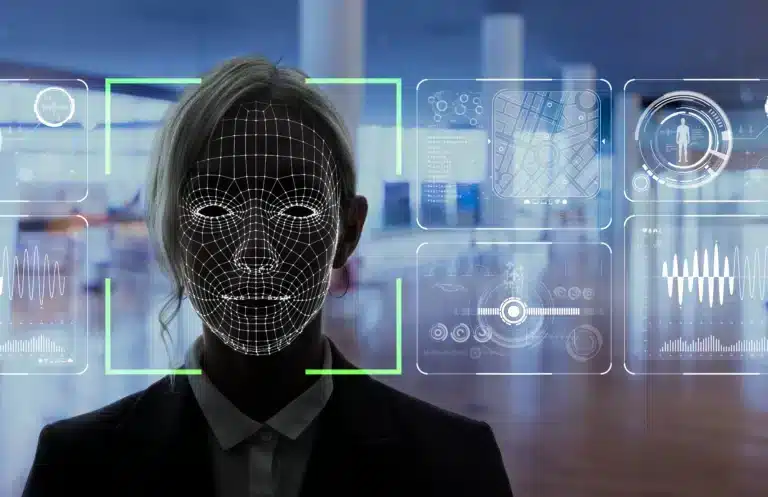Introduction
What Is Voice Biometrics: Voice is a technology that uses the unique characteristics of an individual’s voice to identify and authenticate their identity. Voice has gained popularity in recent years as a secure and convenient method of authentication, with applications ranging from phone banking to access control systems.
One of the key advantages of biometrics testing is its non-intrusive nature. Unlike other biometric systems that require physical contact or scanning, voice can be implemented remotely, making it a convenient option for various applications. Additionally, voice can be used in real-time, allowing for immediate authentication without the need for additional hardware or devices.
The process of voice involves capturing and analyzing various vocal characteristics, such as pitch, tone, and rhythm. These characteristics are unique to each individual and can be used to create a voiceprint, which serves as a digital representation of a person’s voice. When a person speaks into a voice biometric system, their voice is compared to the stored voiceprint to determine if there is a match. This process is often referred to as voice verification or voice authentication.

How does voice work?
Voice is a technology that uses unique vocal characteristics to identify and authenticate individuals. It works by analyzing various aspects of a person’s voice, such as pitch, tone, rhythm, and pronunciation, to create a unique voiceprint.
One of the key components of voice is the process of enrollment. The enrollment process typically involves the individual speaking a series of predetermined phrases or sentences to capture a wide range of vocal characteristics. The voice system then captures their voice and compares it to the stored voiceprints in the database.
The comparison process involves analyzing the captured voice and comparing it to the stored voiceprints using advanced algorithms. These algorithms take into account various factors, such as the frequency and duration of certain vocal characteristics, to determine the likelihood of a match.
This can be useful in a variety of applications, such as access control systems, telephone banking, and customer service interactions. Voice offers a convenient and secure method of identification, as it is difficult for an imposter to replicate someone else’s unique vocal characteristics.
What is vocal biometrics?
Vocal is a technology that uses the unique characteristics of an individual’s voice to identify and authenticate them. It is a form of biometric authentication that relies on the distinctiveness of a person’s voice to verify their identity.
One of the key features of vocal biometrics is that it is a non-intrusive and convenient method of authentication. This makes it ideal for applications such as phone banking, call centers, and voice-controlled devices.
Vocal works by analyzing various characteristics of an individual’s voice, such as pitch, tone, rhythm, and pronunciation.
One of the advantages of vocal biometrics is its high level of accuracy. The distinctiveness of an individual’s voice makes it difficult for impostors to mimic or replicate. By analyzing the voice patterns of a speaker, it is possible to identify anomalies or inconsistencies that may indicate fraudulent activity.
Vocal biometrics is a technology that uses the unique characteristics of an individual’s voice to identify and authenticate them. With its high level of accuracy and ability to detect fraud, vocal biometrics is becoming an increasingly popular form of biometric authentication in various industries.
What is the importance of voice?
Voice is a technology that uses unique vocal characteristics to identify and authenticate individuals. It has gained significant importance in recent years due to its numerous benefits and applications in various industries. Voice offers a secure and convenient way to verify a person’s identity, making it an essential tool in today’s digital world.
One of the key advantages of voice is its high level of security. This makes it extremely difficult for imposters to mimic someone else’s voice and gain unauthorized access.
Another important aspect of voice is its convenience. Unlike traditional methods of authentication, such as passwords or PINs, voice biometrics does not require any physical interaction or memorization. This eliminates the need for carrying physical tokens or remembering complex passwords, making it a user-friendly and efficient solution.
Voice also offers a non-intrusive and passive form of authentication. Unlike other biometric technologies like fingerprint or iris scanning, voice can be performed without the user’s knowledge or consent. This makes it ideal for applications where continuous authentication is required, such as call centers or voice assistants. Users can be seamlessly authenticated in the background, enhancing the overall user experience.
What is voice for call centers?
Voice for call centers is a technology that uses voice recognition to identify and authenticate callers. It is a form of biometric authentication that analyzes the unique characteristics of an individual’s voice to verify their identity. This technology has gained popularity in call centers as a way to enhance security and improve customer experience.
Voice works by capturing and analyzing various voice characteristics, such as pitch, tone, and rhythm. These characteristics are unique to each individual, similar to fingerprints or facial features. By comparing the voice patterns of a caller to a pre-registered voiceprint, the system can determine if the caller is who they claim to be.
One of the main advantages of voice biometrics for call centers is its ability to provide seamless and secure authentication. Voice biometrics eliminates the need for customers to remember complex passwords or answer security questions, making the authentication process more convenient and efficient.
Furthermore, voice biometrics can also help detect and prevent fraud in call centers. By analyzing the voice characteristics of a caller, the system can identify if the voiceprint matches that of a known fraudster. This can help call center agents flag suspicious calls and take appropriate action to prevent fraudulent activities.
Another benefit of voice biometrics for call centers is its potential to improve customer experience. With voice biometrics, customers no longer need to go through lengthy authentication processes, reducing call handling time and improving overall customer satisfaction.
What are the 4 main types of biometrics?
Biometrics refers to the measurement and analysis of unique physical or behavioral characteristics of individuals.
Fingerprint recognition is one of the oldest and most widely used biometric technologies. It involves capturing an individual’s fingerprint image and comparing it to a database of known fingerprints. Each person has a unique pattern of ridges and valleys on their fingertips, making fingerprints an effective way to identify individuals.
Facial recognition is another popular biometric technology that is widely used in various applications. It involves capturing an individual’s facial image and analyzing it to identify unique facial features. These features, such as the distance between the eyes or the shape of the nose, are then compared to a database of known faces to determine a match.
Iris recognition is a biometric technology that uses the unique patterns in an individual’s iris to identify them. The iris is the colored part of the eye, and it contains intricate patterns that are unique to each person.
Voice recognition is a biometric technology that analyzes an individual’s voice to identify them. Voice recognition systems capture an individual’s voice and compare it to a database of known voiceprints to determine a match.
What is voice biometrics?
Voice biometrics uses unique vocal traits to identify and authenticate people. It generates a voiceprint from pitch, tone, and speech patterns and compares it to a database to authenticate identity.
Security systems, contact centers, and other voice recognition applications use this technology. Voice biometrics uses a person’s distinctive voice to authenticate them, making it secure and convenient. Voice biometric identification is more secure than passwords or PINs, which can be forgotten or hacked.
By employing voice biometrics, enterprises may improve security and streamline authentication. Voice biometrics may rapidly and accurately verify callers’ identities in contact centers, eliminating the need for lengthy security questions or readily leaked personal information. Voice biometrics is a strong technology that improves security, convenience, and efficiency.
What is voice biometrics?
Voice biometrics uses unique vocal traits to identify and authenticate people. It generates a voiceprint from pitch, tone, and speech patterns and compares it to a database to authenticate identity.
Voice biometrics is secure and dependable since each person’s voice is unique and hard to copy. It’s a fast and easy approach to verify identity without passwords or ID cards.
Security systems, contact centers, and other voice recognition applications use this technology. Voice biometrics can unlock restricted locations or sensitive data in security systems, allowing only authorized users.
Voice biometrics can authenticate client identities in call centers, reducing fraud. It can also personalize client interactions and help agents obtain customer data faster.
Overall, voice biometrics is a powerful technology that offers enhanced security and convenience in various applications. Its ability to accurately identify individuals based on their unique vocal characteristics makes it a valuable tool in today’s digital world.
How does voice biometrics work?
Voice biometrics is a fascinating technique that uses unique speech traits to identify and authenticate people. A voiceprint is a computerized representation of a person’s voice based on pitch, tone, and speaking patterns. Verifying identity involves comparing this voiceprint to a database of known voiceprints.
Voice biometrics has the power to identify and authenticate people using their distinctive vocal traits. It generates a voiceprint based on pitch, tone, and speech patterns to verify against a database. Its non-intrusiveness and convenience make it perfect for voice recognition applications.
How does voice biometrics work?
Voice biometrics uses unique vocal traits to identify and authenticate people. A voiceprint—a digital record of an individual’s voice—is created by evaluating pitch, tone, and speaking patterns. Comparing this voiceprint to a database of known voiceprints verifies identity.
Voiceprints are created by recording a person’s voice with a microphone or phone. Advanced algorithms analyze the speech sample to extract features like frequency, sound duration, and word pronunciation. Voice biometrics is secure and convenient because it’s hard to copy someone’s voice.
How does voice biometrics work?
Voice biometrics is a technology that utilizes unique vocal characteristics to identify and authenticate individuals. It works by analyzing various factors such as pitch, tone, and speech patterns to create a voiceprint, which is essentially a digital representation of a person’s voice.
When a person speaks, their vocal characteristics create a distinct pattern that is unique to them. By creating a voiceprint, the technology can accurately identify and authenticate individuals based on their voice alone.
One of the key advantages of voice biometrics is its non-intrusive nature. Unlike other forms of biometric identification, such as fingerprint or iris scanning, voice biometrics does not require physical contact or the need for individuals to actively participate in the identification process. This makes it a convenient and user-friendly solution for applications such as security systems and call centers, where quick and accurate identification is crucial.

Conclusion
Voice biometrics is a technology that has revolutionized the field of security and authentication. It is a method of identifying individuals based on their unique voice characteristics. This technology has gained popularity in recent years due to its high level of accuracy and convenience. Voice biometrics has numerous applications in various industries, including banking, healthcare, and law enforcement.
One of the key advantages of biometrics voice is its high level of accuracy. This makes it extremely difficult for imposters to mimic someone else’s voice and deceive the system. Voice biometrics can accurately verify the identity of an individual with a high degree of certainty, making it an effective tool for security purposes.
Another advantage of voice biometrics is its convenience. Unlike traditional methods of authentication such as passwords or PINs, voice biometrics does not require any physical tokens or memorization. Users can simply speak into a microphone or phone to verify their identity. This makes it a user-friendly and efficient method of authentication, especially in situations where speed and convenience are crucial.
Voice biometrics has found applications in various industries. Law enforcement agencies can also benefit from voice biometrics by using it to identify suspects based on voice recordings.
Voice biometrics is a highly accurate and convenient technology for authentication and identification. Its unique ability to analyze and identify individual voice characteristics makes it a powerful tool in the field of security. With its applications in various industries, voice biometrics is likely to continue to grow in popularity and become an integral part of our everyday lives.

